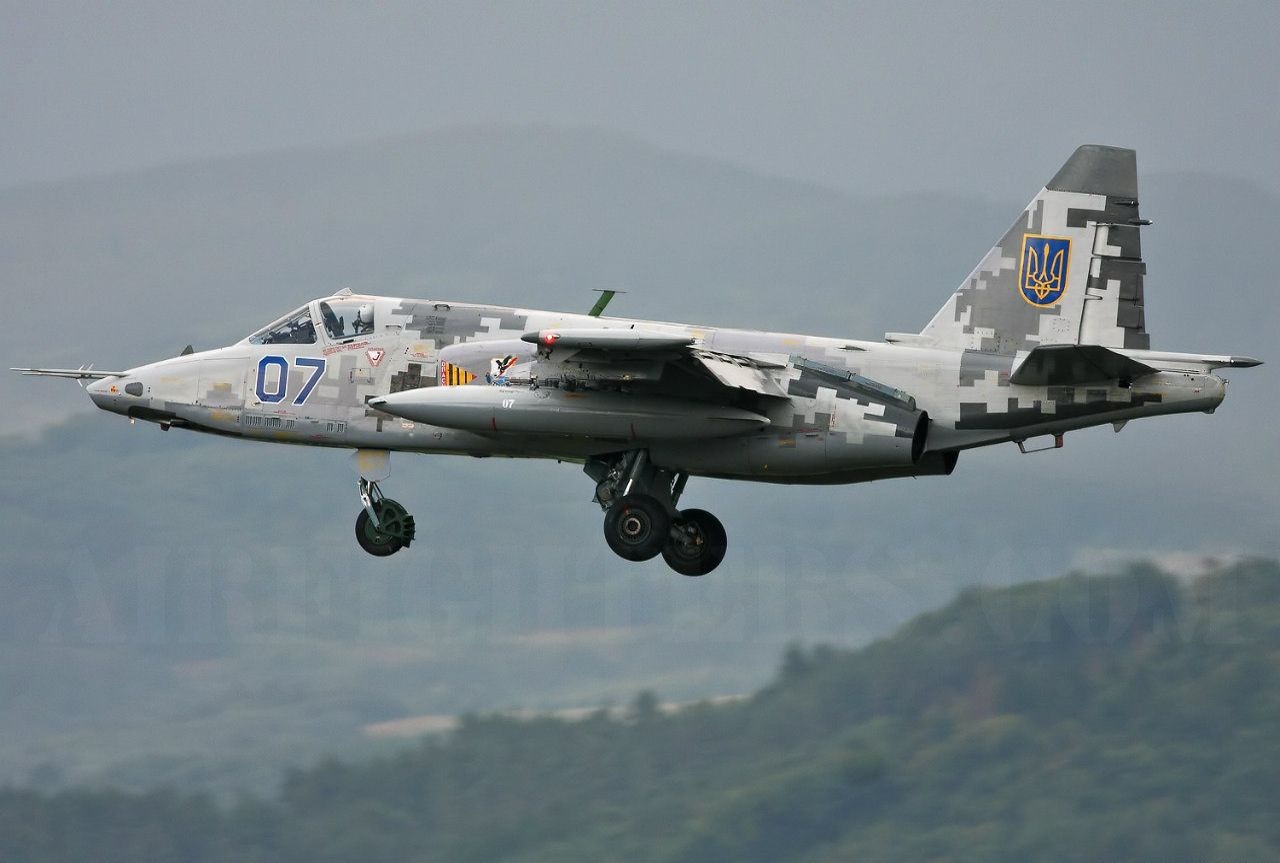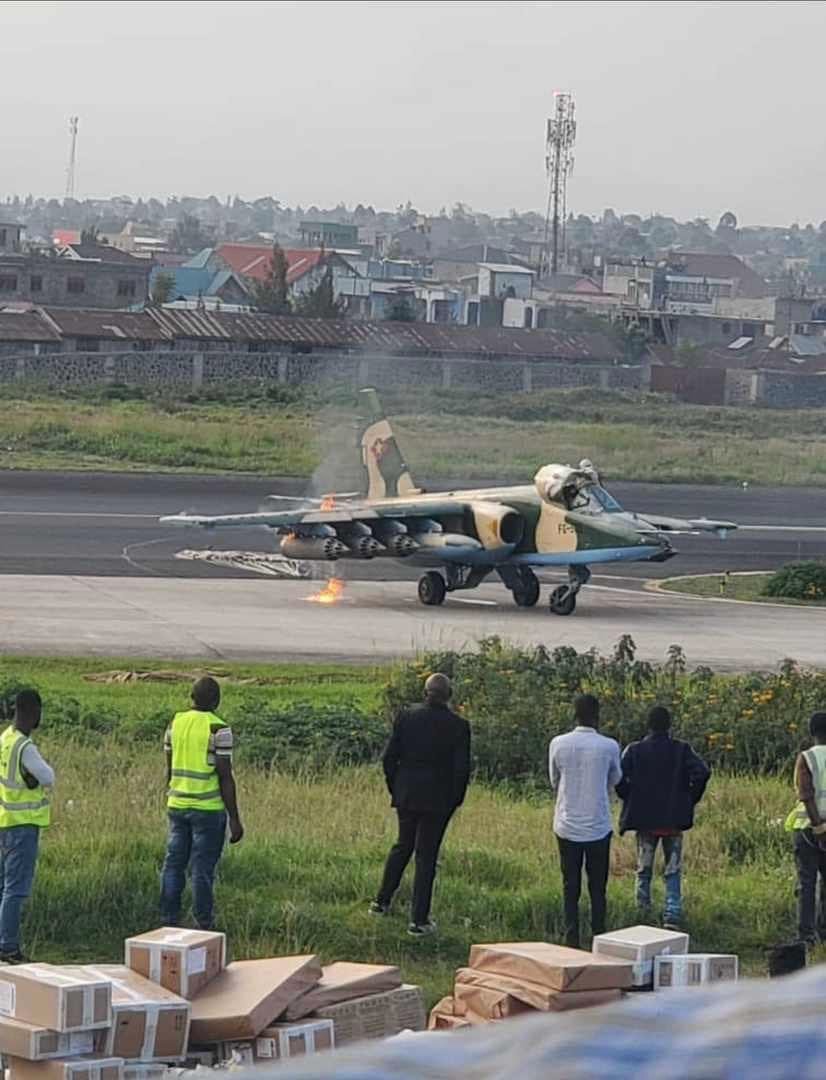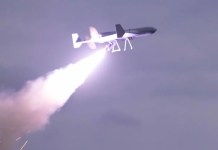A video has appeared online showing ground troops firing man-portable air defense systems (MANPADS) against a Sukhoi Su-25 attack aircraft.
The incident is thought to have occurred in the city of Goma, near the border between Rwanda and the Democratic Republic of the Congo (DRC).
The Rwandan government has published a statement that explains that the Congolese jet had breached its airspace “for the third time” and that “defensive measures” were employed.
“Rwanda asks the DRC to stop this aggression,” the statement noted. On the other hand, Congo refuted Rwanda’s claim that the plane was in Rwandan airspace.
In a statement, Congo said, “The Rwandan shots were directed towards a Congolese aircraft flying within Congolese territory.”
In the footage, a Su-25 is seen flying at a low altitude as a missile approaches the aircraft and detonates close by, appearing to damage the fighter jet.
Additionally, a picture purportedly taken at Goma Airport and shared online shows the plane after a successful landing. It appears like its right wing is on fire.
Congo confirmed that the aircraft had safely landed in the provincial capital of Goma without suffering major damage. Another video shows the fire trucks spraying water onto the fighter jet to extinguish the flames.
2/3
According to reports, the Su-25 was flying over the city of Goma when it was hit by a MANPADS missile and was returning after taking off to the area of heavy fighting between the government of the Congo and the so-called. March 23 Movement. pic.twitter.com/90l0Pw6vTm
— OsintTV? (@OsintTV) January 24, 2023
The two earlier cases, disclosed in November and December, sparked outrage in Kigali, Rwanda. In December, Rwanda reported that another Congolese fighter jet had briefly breached its airspace.

In November 2022, an unarmed Congolese warplane temporarily landed at a Rwandan airstrip while on a surveillance mission close to the border, which Congo said was an accident.
Data from the International Institute for Strategic Studies’ Military Balance 2022 research shows that the Democratic Republic of the Congo’s Air Force employs four Su-25 attack aircraft, the only fixed-wing combat aircraft in the nation.
The Su-25, also known by the NATO reporting name Frogfoot, is a single-seat close-support aircraft. It is produced by the Moscow-based Sukhoi Design Bureau Joint Stock Company and the Novosibirsk Aircraft Production Association in Novosibirsk, Russia.
The Su-25 is meant to defeat small moving and stationary ground targets as well as to attack low-speed air targets at the forward edge and in the closest tactical and operational depth.
The wings have ten pylons for carrying a variety of mission-specific air-to-air and air-to-ground armament systems. The air-to-ground missiles that the aircraft is capable of carrying are Kh-23 (NATO codename AS-7 Kerry), Kh-25ML (AS-10 Karen), and Kh-29l (AS-14 Kedge).
The aircraft can be armed with UB-32A pods for 57mm S-5 rockets, B-8M1 pods for 80mm S-8 rockets, S-24 240mm guided rockets, and S-25 330mm guided rockets.
Besides that, it can also carry laser-guided bombs weighing 350 kg-670kg, incendiary weapons weighing 500 kg, and cluster bombs.

‘Deliberate Act Of Aggression
DRC called Rwanda’s action a “deliberate act of aggression that amounts to an act of war” intended at sabotaging a peace accord to end the M23 rebel group’s onslaught.
The Democratic Republic of the Congo has long accused Rwanda of backing the M23, a rebel group fighting the Congolese government. Rwanda has disputed the accusations.
To Rwanda’s dismay, powerful Western voices have openly supported the accusations.
UN experts stated last month that they had “substantial evidence” that Rwandan government forces had entered the Democratic Republic of the Congo to support the M23 rebels or launch attacks against another rebel group that included fighters suspected of taking part in the Rwandan genocide in 1994.
The United States, France, and Germany have pushed Rwanda to stop helping the insurgents.

Meanwhile, Rwanda accuses Congo of backing a different rebel force that allegedly contains ethnic Hutus who took part in the genocide that resulted in the deaths of more than 8,00,000 ethnic Tutsis as well as moderate Hutus who attempted to protect them.
Regional leaders mediated a deal in November 2022 that called for the Tutsi-led force to leave recently taken areas by January 15 to stop the bloodshed that has caused at least 450,000 people to flee their homes.
But, Congolese President Felix Tshisekedi said that the rebels had not completely left those areas. The M23 first achieved notoriety in 2012 and restarted fighting in late 2021, saying Kinshasa had failed to honor a vow to incorporate them into the army, among other issues.
- Contact the author at ashishmichel(at)gmail.com
- Follow EurAsian Times on Google News




